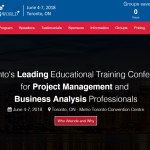Change leadership is different from operational management, and often operational managers are thrust into having to be change leaders. Some rise to the occasion, become really good change leaders and succeed brilliantly.
Others adopt only some good change leadership traits, and then struggle. And yet others cannot transition into this role and eventually harm their organization as well as their own careers.
In over 20 years of consulting experience on major transformation projects, I have worked with all types of operational managers who had to assume the mantle of change leadership. It turns out that there is really only four categories of change leaders, and they are on a scale from most likely to struggle to most likely to succeed.
With the accelerating pace of change through technology, globalization, and other factors, it is certain that most operational managers will at some point have to lead their organization, or department, through a significant transition. It might therefore help to know what the four types of change leader are, and what the best change leaders have in common.
In this blog I’ll share with you what I have experienced as key traits of really good change leaders. These change leaders are like a dream come true. They are rare, but I have had the incredible luck of actually working with some of them. Because they are like a dream come true, for me they are “Dream change leaders”.
Another blog covers all of the types of change leader, from the Dream change leader covered in this blog, to those who struggle the most.
What to Look for
What differentiates the best change leaders from the rest are their inherent qualities. Inherent qualities are those components that make up a person, each one of us. This is ‘what we’re like’.
When first meeting someone it is almost impossible to know someone’s inherent qualities and traits. However, over time, these traits reveal themselves through words and actions. When assessing leaders it helps to keep an eye out for these to see whether you are dealing with a Dream change leader or someone lesser.
Below is a list of traits, together with visible behaviours you can look for that signal these inherent qualities.
1. Genuinely cares for people
Most business leaders appear on the surface to be tough, cool or even callous. The best change leaders appear at first no different. However, look a bit further below, and you will see concern for people show itself.
On a practical level, look for how much they talk about impact on people when discussing difficult decisions to be made. If they wrestle with these impacts as much as impacts on the bottom line or operational efficiency, you are likely in a meeting with a Dream change leader. If they seem to ignore people impacts, or are dismissive of them, then you’re not.
2. ‘Gets’ the importance of people
When we at Hadas Partners hire change management consultants or subcontractors, we don’t focus as much on past experience and accreditations. We look for only two inherent characteristics, one of which is “getting” the importance of people. If you have that, we can teach you change management. If not, we are all wasting our time.
It is the same for top change leaders. They understand how important people are to making a change successful.
On a practical level this shows up in questions Dream change leaders ask. They probe for risks due resistance. Specifically, they want to discuss what the impact on business operations is going to be. They want to talk about the direct and indirect political implications of these impacts.
They are as comfortable discussing how people will perceive an impact, as they are with discussing what the impact itself will be. Perception is reality, and they understand that, inherently. If they don’t get all this, you are likely not speaking with a Dream change leader.
3. Wants to measure success reality and optics
Top change leaders tend to be very results and measurements driven, but with a twist. Yes, they want to know how you will achieve something and by when. But because perception of success is just as important to Dream change leaders, the measurements need to reflect this too. They will want to know how the project is perceived by key individuals or groups, in addition to wanting to measure actual project targets.
Again, on a practical level you want to look for the leader asking for how you will know that people are more ready to adopt. They want to know how you will measure this, and they may want proof this has worked for you before. They will want to know when they can expect to see these results, and how often.
If you get these difficult questions, rejoice! You are very likely in the presence of a Dream change leader. If you hear crickets when talking about adoption, start to worry. No seriously, start to really worry.
4. Is energizing and demanding at the same time
I have heard it said that when great leaders pass away there is a huge funeral procession for two reasons. One reason is the obvious one, people are going to miss someone so inspiring and motivating. All of us appreciate people like this in our lives.
The other reason however is relief! All great leaders tend to be very, very demanding and exacting. They are a lot of work! They ask for a lot and are not satisfied with anything resembling mediocrity. Those are tough expectations to meet! So when they are gone, whew! Pressure’s off.
You will know when you are in the presence of a potential Dream change leader if you have to work hard, but feel really good about it! In practical terms this means working long and hard hours. But throughout, and at the end, you will feel very good about yourself and your work.
Or, alternatively, you won’t be there for long! And that’s the flip-side of working with a Dream change leader – they are exacting.
However, in the end, you will end up really liking them, or at least very much respecting them. It’s almost impossible not to respect a really good change leader (even if you end up not liking them in the end).
5. Confident, not arrogant
 You will never find a leader who does not have a healthy ego. You can’t be a shrinking violet and rise to the top. As Jordan Peterson says, being overly agreeable means you are unlikely to succeed in any kind of competitive environment.
You will never find a leader who does not have a healthy ego. You can’t be a shrinking violet and rise to the top. As Jordan Peterson says, being overly agreeable means you are unlikely to succeed in any kind of competitive environment.
A strong ego means not being overly agreeable. Almost all people in leadership positions have this trait. What is different with top change leaders is that they exhibit an ego that presents itself as quiet confidence. It appears to be, and in a way is, a type of humility.
Here is what this looks like in practice, and then I want to share with you a very interesting little story that happened to me. It’s an anecdote that in an odd way exemplifies this last trait.
In practice, a Dream change leader will ask a lot and listen to your opinion. They tend not to care about your title or position, but care about what you have to say. You will “feel” heard. And they will give others the same courtesy. They will want to hear many opinions before making up their mind.
And once they make up their mind, they are very difficult to dissuade. They become incredibly firm and consistent in their actions once their decision is made. They will even take on other powerful people and engage in outright conflicts where necessary! I have seen them put objectives they decided on ahead of personal image, in some cases.
If you find the leader is listening more to you and others, and is talking much less about themselves, then you may easily be in the presence of a Dream change leader. If they need to keep talking about themselves and their own perceived legendary glories, then you may have a little more work ahead of you.
Like this blog? Share it with your colleagues. And sign up and you won’t miss another one!













